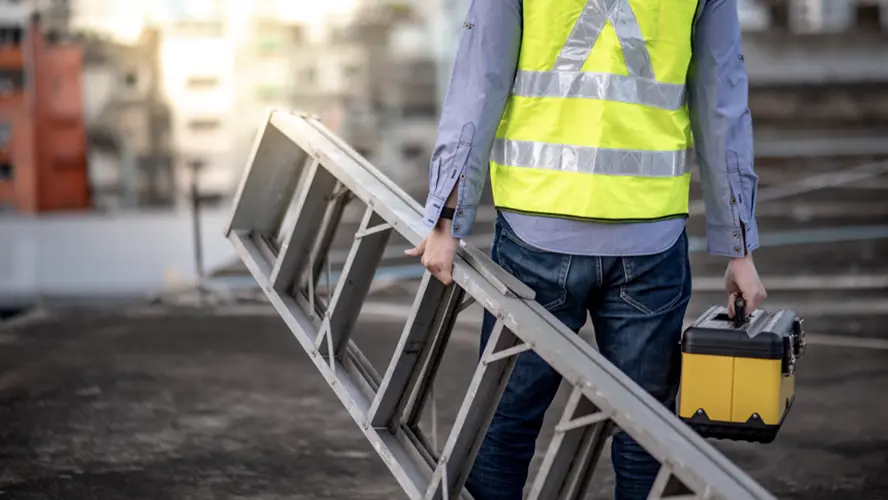Ladder Safety Tips
At SMART Safety, we are here to make sure your employees stay safe when working on ladders. Take a look at these tips and make sure you have a ladder safety plan in place.
1. Importance of Ladder Safety on Construction Sites
When it comes to construction sites, ensuring ladder safety is of paramount importance. Statistics reveal the alarming prevalence of ladder-related accidents, highlighting the potential for serious injuries and their consequences. Compliance with Occupational Safety and Health Administration (OSHA) regulations is not only crucial for legal reasons but also to prioritize the well-being of workers.
2. Selecting and Inspecting the Right Ladder
Choosing the appropriate ladder for the task at hand is the first step in ladder safety. Different ladder styles cater to various construction needs, and it’s vital to consider factors like height, weight capacity, and stability. Additionally, a thorough inspection of the ladder’s condition is essential. Regular checks for damage, wear, and defects play a significant role in preventing accidents.
3. Proper Setup and Positioning of Ladders
The stability of a ladder relies heavily on its foundation. Placing ladders on level and solid ground is crucial to prevent tipping or slipping incidents. Construction sites can be filled with potential hazards, and it’s essential to avoid placing ladders on surfaces prone to instability or slipperiness. Moreover, understanding the ideal angle and extension for a ladder and maintaining three-point contact while climbing contribute to safe ladder usage.
4. Climbing and Dismounting Safely
Climbing a ladder safely entails following proper ascension techniques. Workers should face the ladder and use handrails for support. Maintaining proper body alignment and balance is vital to minimize the risk of falls. It’s crucial to be aware of common mistakes, such as overreaching or stretching too far, and to refrain from carrying tools or equipment while climbing to maintain stability.
5. Additional Safety Measures
Personal Protective Equipment (PPE) plays a crucial role in ladder safety. Wearing appropriate safety gear, including helmets and non-slip footwear, provides an added layer of protection. Depending on the job requirements, fall protection systems, such as harnesses or guardrails, may be necessary. Minimizing hazards and obstacles around work areas to prevent trips or falls is equally important. Furthermore, securing the ladder to prevent accidental displacement enhances overall safety.
6. Training and Education for Workers
Proper training programs are vital in ensuring ladder safety. Comprehensive modules should cover various aspects, including ladder selection, setup, climbing techniques, and emergency procedures. Reinforcing best practices and safe behaviors among workers creates a culture of safety and minimizes the likelihood of accidents. Encouraging open communication about safety concerns and regularly assessing ladder safety protocols are crucial for ongoing education and improvement.
7. Emergency Preparedness and Response
In the event of a ladder accident, first aid and emergency planning play a crucial role. Construction sites should have basic first aid supplies readily available and develop clear emergency response protocols specific to ladder-related incidents. Reporting and investigating ladder accidents promptly and thoroughly provide valuable insights into identifying root causes and implementing corrective actions.
8. Continuous Evaluation and Improvement
Ladder safety is an ongoing endeavor that requires continuous evaluation and improvement. Regular safety audits and inspections help monitor ladder conditions and ensure compliance with safety standards. Learning from near misses and incidents provides an opportunity to analyze potential risks and develop prevention strategies. Implementing necessary corrective actions and sharing lessons learned across the construction site contribute to a safer work environment for all.








